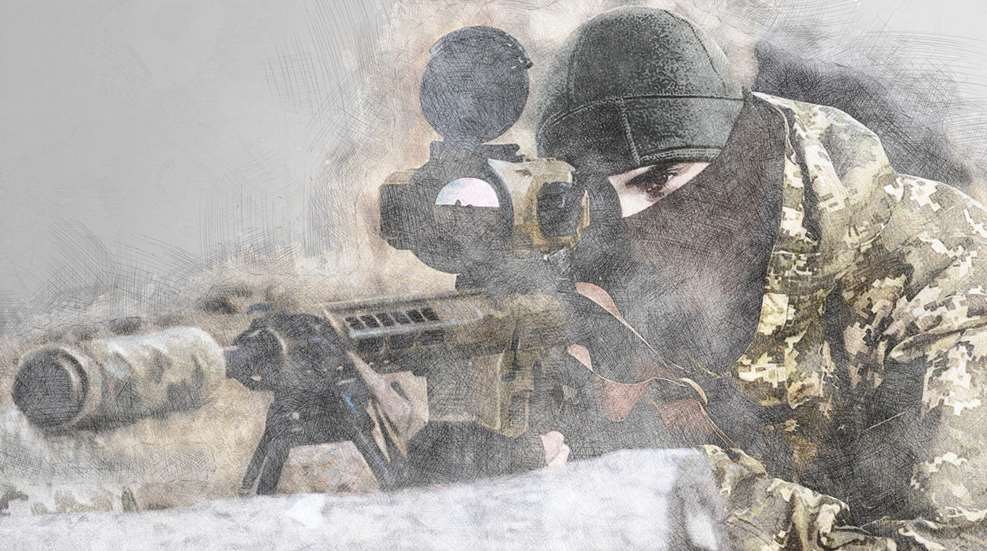
Perhaps one-quarter of Ukraine’s snipers have thermal sights on their rifles, like the one shown, providing a decisive advantage over their Russian counterparts.
“The Ukrainians have very, very good snipers, and they’ve been picking [Russian officers] off left and right.”
—Retired U.S. Army Gen. David Petraeus to CNN, March 20, 2022
On the opening day of Russia’s invasion of Ukraine, a Ukrainian sniper’s bullet struck down Maj. Gen. Andrei Sukhovetsky, the first general officer to die in the conflict. Commanding the Russian 7th Guards Airborne Division, he was leading a heliborne assault on a critical airfield just 20 miles northwest of Kyiv. General Sukhovetsky’s loss—and the repulsion of that initial attack—seriously disrupted the invaders’ timetable.
Defending that airfield were elements of Ukraine’s elite 79th Airborne Assault Brigade, which included a company of snipers led by Capt. Valery Chibineev. Three days into the battle, Capt. Chibineev, a recipient of Ukraine’s highest valor decoration—the Hero of Ukraine award—was killed by a Russian sniper. Chibineev’s medal had been earned in 2016 for fighting pro-Russian separatist forces in Ukraine’s eastern Donbas region.
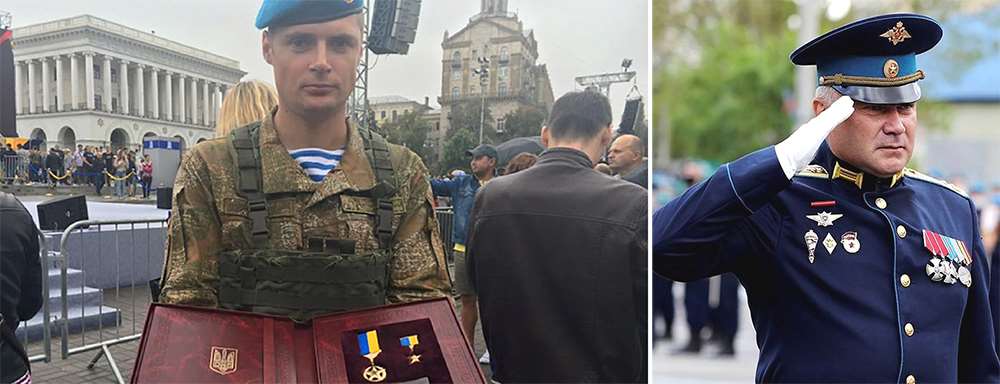
The Donbas Prelude
Though little reported, Ukraine’s Donbas region has seen almost continuous fighting—especially sniping—since its 2014 seizure by “pro-Russian” separatists. Abutting the Russian border, this 10,000 square-mile area has been a bubbling cauldron of combat, clandestinely reinforced by Russian snipers, Russian weapons and Russian sniper instructors.
Indeed, most individual Ukrainian fatalities in Donbas have resulted from sniper fire. According to the Ukrainian Ministry of Defense, 65 Ukrainians were killed in Donbas in 2021 and nearly half (29) were shot by enemy snipers. One Ukrainian battalion commander estimated the 2020 sniper kills as even higher, making up 80 percent of losses.
Most often, the Russian and pro-Russian snipers deploy in pairs, according to a Ukrainian army report, but they are sometimes massed for special missions. While defending, the report said, up to a platoon will occupy a frontage of 200 or more meters, with the least-experienced snipers well forward and better-armed and better-trained snipers behind them.
For the first time since World War II, Ukrainian sniper ranks include women, with one, 42-year-old Olena Bilozerska, scoring 10 kills while sniping in Donbas. Following in the footsteps of legendary World War II sniper, and fellow Ukrainian, Lyudmila Pavlichenko, she has been hailed in the foreign press.
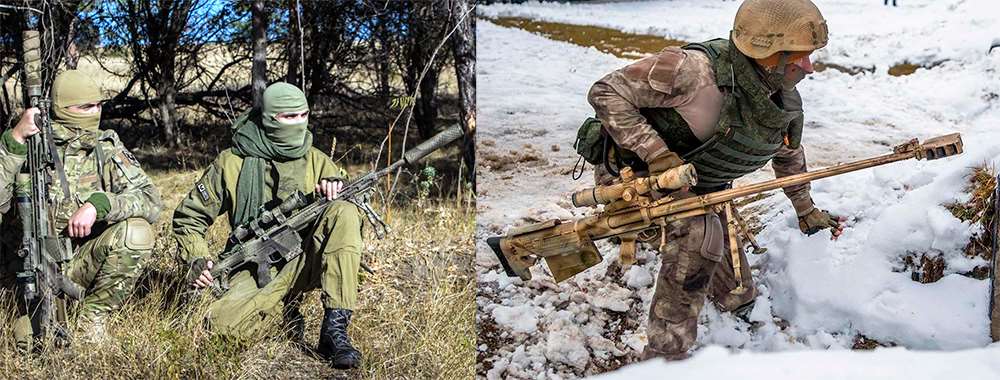
One night, Bilozerska filmed an engagement through her SVDM rifle’s thermal scope when she picked off three Russians crawling toward her position. It left no doubt about her marksmanship or her thermal scope’s effectiveness. Days before the invasion, Bilozerska spoke with Nick Craven of the London Mail newspaper about her feelings on taking enemy lives. “When the enemy crawls toward our position to kill me, does he think if I have a husband, parents or kids? Of course not. And I don’t bother myself with stupid things either. That stuff is for books and movies.” Hardened by years of fighting, she once narrowly escaped a tracer bullet that grazed her cheek.
In Donbas, a Ukrainian officer reported, “In 2014 there were a lot of [pro-Russian] snipers with SVD [rifles] who didn’t have much experience. Now [2021] snipers are professionals and mostly come from RF (Russian Forces), mostly with new weapons.”
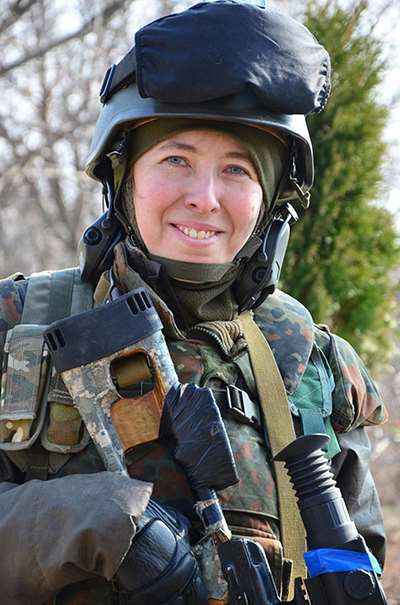
Foreign Fighters And Foreign Weapons
Both sides have seen foreigners join their sniper ranks, especially Russians masquerading as Donbas residents. In May 2020, the Ukrainian government presented photographic evidence to the Organization for Security and Cooperation in Europe (OSCE) to document the presence of elite Russian Federal Security Service (FSB) snipers in Donbas, thanks to a captured helmet video shot by the Russians themselves. Interestingly, the FSB snipers had British-made Accuracy International AZ rifles chambered in .338 Lapua Mag.
To conceal their presence, Russian snipers have sometimes shot OSCE surveillance cameras positioned on the cease fire “Disengagement Line.” Russian snipers have also reconnoitered Ukrainian territory and adjusted fire for 122 mm mortars.
According to the Ukrainian Main Intelligence Directorate, Russian “Wagner Group” mercenary snipers arrived in Donbas in May 2019 to reinforce the pro-Russian fighters. Nicknamed “Little Green Men” because they wear unmarked green uniforms, Wagner Group snipers have also fought Russia’s battles in Libya and Syria. In the latter case, four years ago, American aircraft killed an estimated 200 Wagner Group mercenaries when they attacked a U.S. outpost.
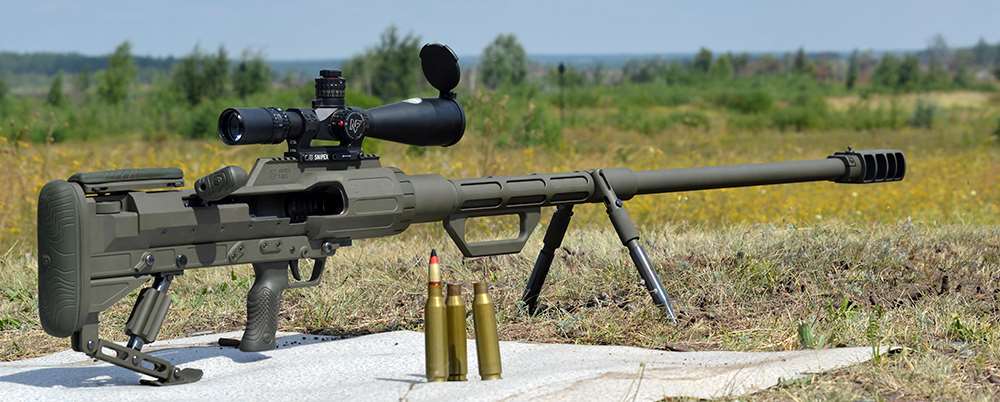
Individual foreign volunteers, too, have appeared in Donbas, the most notable being a Serbian sniper nicknamed “Deki.” Armed with a quality Russian T-5000 rifle chambered in .338 Lapua Mag., Deki was the focus of a 2018 Russian documentary, “A Sniper’s War.” His sniping ability, however, was questionable, due to his jerking the trigger and carelessly exposing himself at windows.
Foreign volunteers are also fighting for the Ukrainians, answering President Volodymyr Zelenskyy’s call for international fighters to form a separate brigade. Some 20,000 volunteers from 52 countries have thus far taken up arms to join the fight, including foreign snipers. Most have been combat veterans of recent conflicts in Iraq and Afghanistan, such as Canadian volunteer sniper Willy Dobid. A combat veteran sniper of Canada’s Royal 22nd Regiment, he expressed his motivation to a Canadian reporter. “I want to help them, it’s as simple as that,” he explained. “I have to help because there are people here being bombarded just because they want to be European and not Russian.” Similar sentiments motivated a British volunteer sniper, Shane Matthews. An experienced sniper, having fought in Afghanistan and Iraq with the 2nd Battalion, Princess of Wales Regiment, he called Russian President Vladimir Putin, “A modern-day Hitler.” That sentiment was also shared by an anonymous Swedish volunteer sniper.
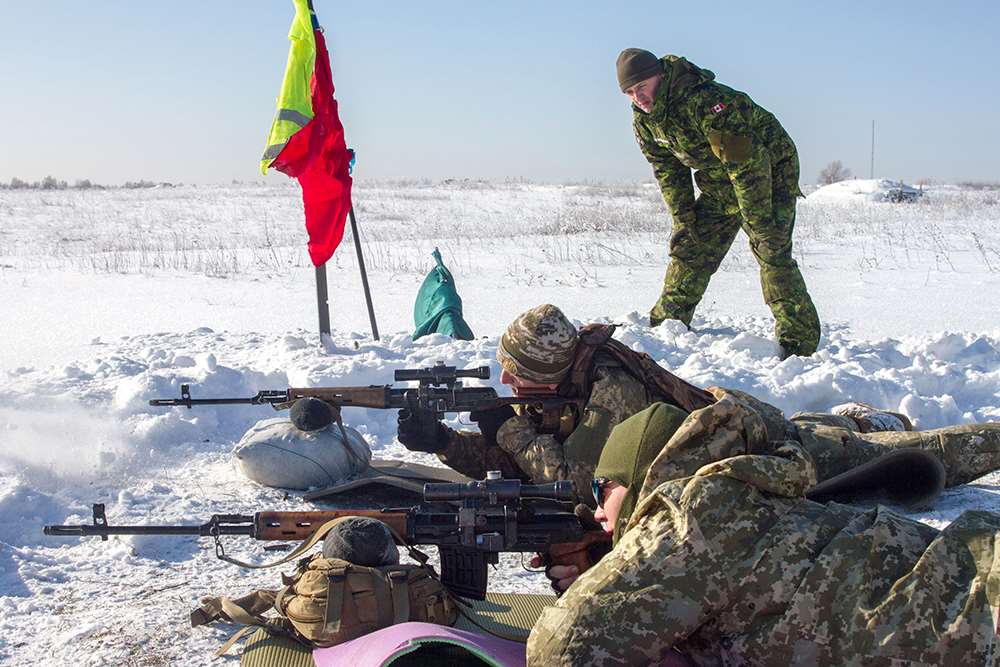
Foreign sniper weapons initially reached the Ukrainians in 2017, especially surplus U.S. Army M24 sniper rifles. The following year, Ukraine purchased nearly $1 million worth of Canadian-made LRT-3, .50-cal. sniper rifles, produced by PGW Defense Technologies of Winnipeg. Studying images of Ukrainian snipers, I have noticed everything from British and Belgian rifles to Canadian, Finnish and Austrian sniper weapons. In one case, a Territorial Defense volunteer arrived with an antiquated Mosin-Nagant 7.62x54 mm R sniper rifle and 3.5X PU scope.
No small contribution to Ukraine’s sniping success is the extensive training they’ve received from U.S. Army Special Forces and Canadian Special Operations instructors. Though they were withdrawn just before the invasion, their place has, undoubtedly, been taken by CIA Special Activities Division officers who have impressive sniping expertise.

Russia’s New Generation Of Sniper Rifles
Despite being officially replaced in 2018, the obsolescent SVD “Dragunov” sniper rifle is still in the hands of many invading Russian snipers. During pre-invasion sniper training, nearly all of Moscow’s snipers had the older SVD rifles. Two decades ago, I personally witnessed the SVD’s performance when I was chief of competition at the European Military and Police Sniper Championships. Out to 300 yards, the SVD-armed competitors shot adequately. After that, their accuracy could not compare to their Western counterparts shooting bolt guns.
An upgraded version of the Dragunov—the SVDM—entered Russian service in 2018, incorporating a heavier barrel, synthetic side-folding stock, Picatinny rail, quick-detachable suppressor and bipod. Weighing 2 lbs. more than the SVD, the SVDM is chambered in 7.62x54 mm R. A new 152-grain match load, the 7N14, also went into production.
That same year, Russia fielded still another modified SVD, the SVD-K, chambered for the rimless 9.3x64 mm Brenneke, a cartridge designed by Wilhelm Brenneke in 1927 for African big-game hunting. Offering performance akin to the .375 H&H Mag., the Brenneke propels a 256-grain bullet at 2,520 f.p.s. Apparently, the Russians developed the SVD-K to penetrate body armor out to 600 meters. This version is distinguished from other SVDs by its notably bigger magazine to accommodate the 10 mm longer cartridge.
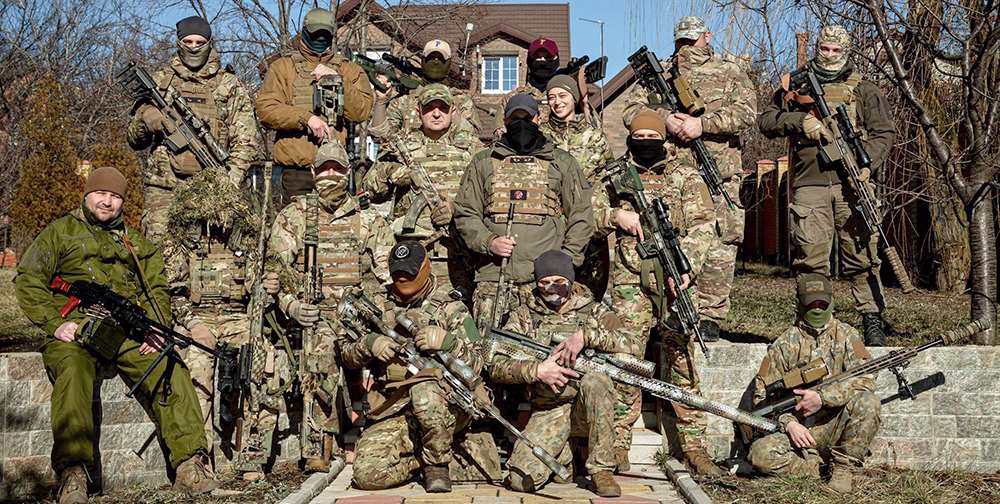
The Russian bolt-action SV-98 sniper rifle, though intended for general issue, was never widely distributed, and its presence among snipers in Ukraine has yet to be reported. Based on the Record-CISM target rifle, the SV-98 incorporates features found on high-end Western sniper rifles, including a heavy, free-floated barrel, adjustable trigger, adjustable buttplate, 10-round detachable box magazine and a through-the-stock pistol grip, similar to Accuracy International rifles. According to Russian sources, the SV-98 was to have been replaced by the state-of-the-art Ortis T-5000, a Russian-made bolt gun chambered in .338 Lapua Mag., however, Ortis production was canceled when it was learned that the firearm contained foreign-made components.
In 2018, the Russian army introduced the Chukavin SVCh family of semi-automatic sniper rifles, chambered in 7.62x54 mm R, .308 Win. and .338 Lapua Mag. An AR-style platform with a steel receiver, the SVCh incorporates a free-floated, hammer-forged barrel, a hinged and retractable stock, Picatinny rails and is issued with a suppressor. It was this rifle’s .338 Lapua Mag. version that “Russia Today TV” depicted President Putin firing at the Kalashnikov factory range, allegedly scoring three hits out of five shots at a 600-meter target. The expensive Schmidt & Bender scope he used is unlikely to be found on issue rifles.
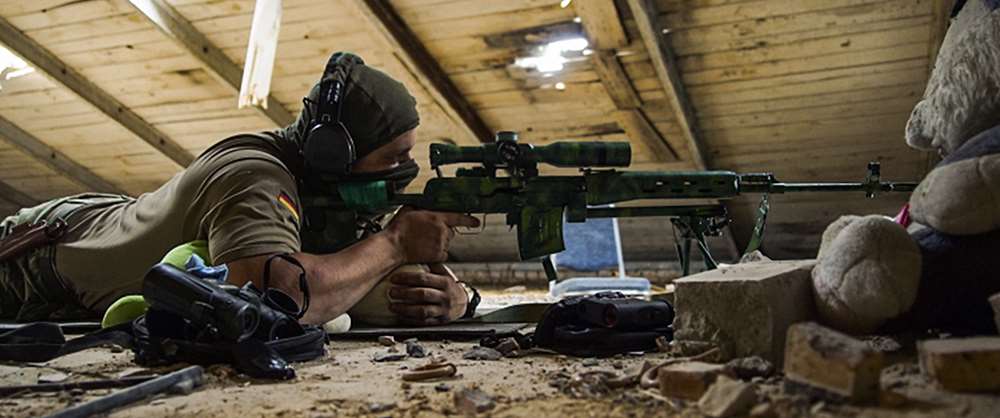
Russia’s new-generation sniper platforms include two heavy rifles in 12.7 mm—one a bolt gun, the other a semi-automatic. The latter, the OSV-96, is an apparent counterpart to the U.S. Army’s Barrett M107 .50-cal. anti-materiel rifle. It has been observed among the Russians invading Ukraine. Fielded in 2007, the OSV-96 folds in half, just forward of the receiver. Its claimed accuracy is 1.5 m.o.a. when firing high-end 910-grain 7N34 ammunition. The newer Russian ASVK bolt-action, a 12.7 mm bullpup design, was adopted in 2013.
Ukraine’s Snipers And Weapons
There’s been considerable effort to arm Ukraine’s snipers since 2017. That year, the Trump Administration sent Ukraine a sizeable number of Barrett M107A1, .50-cal. rifles, along with Savage 110 rifles in .338 Lapua Mag. The following year, Ukraine fielded the first of its own domestically produced sniper rifles, the semi-automatic UAR-10. Based on the American ArmaLite AR-10 rifle, the UAR-10 is chambered for the 7.62 NATO cartridge, which Ukraine has begun producing. The UAR-10 incorporates an extendable stock—adjustable for length and height—Picatinny rails and weighs 12 lbs. It has a claimed accuracy of 1.5" at 100 meters. By late-2019, its manufacturer, UKROP Zbroyar, reported that more than 600 UAR-10s had been fielded. Zbroyar’s UAR-10M sniper rifle, cited in Ukrainian literature, is apparently of similar design, but chambered for the .338 Lapua Mag., as is the bolt-action UBR-008.
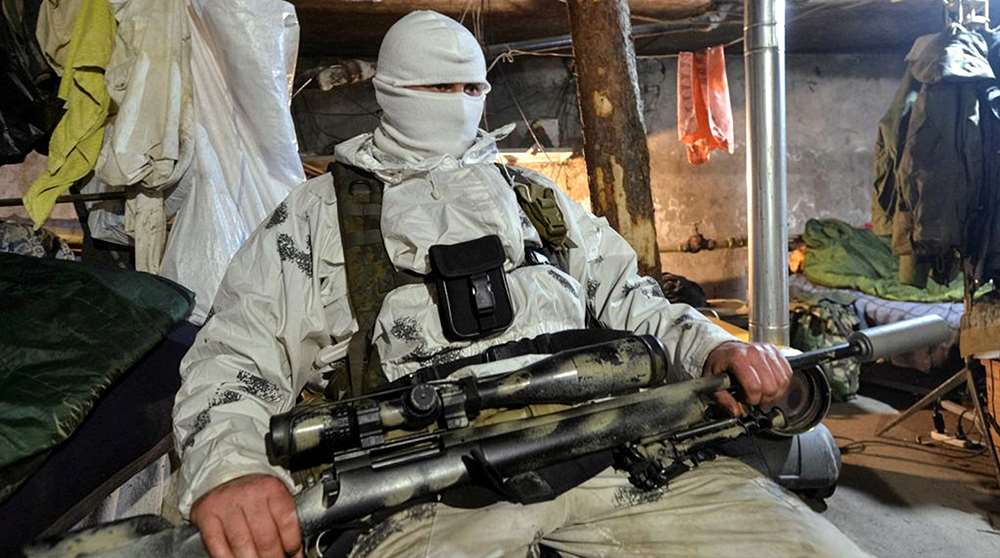
Ukraine is also producing two oversize anti-materiel rifles chambered for the formidable 14.5x115 mm cartridge. This World War II Russian cartridge was originally intended for quad-mount, anti-aircraft guns and tank-mounted KPV heavy machine guns, along with single-shot anti-tank rifles. Not especially noted for accuracy, the 14.5 mm nonetheless provides a powerful punch, offering more than 5,200 ft.-lbs. of energy at 1,000 yards—more than sufficient to penetrate urban walls and light armored vehicles. Ukraine’s other 14.5 mm anti-materiel rifle, the bolt-action Alligator, is only slightly different, adding a five-round, detachable magazine.
With such a variety of quality weapons, Ukraine’s snipers have certainly reaped a deadly harvest. Considering their skills, courage and determination, there is no question regarding the truth of Gen. Petraeus’ statement: “The Ukrainians have very, very good snipers.”





































